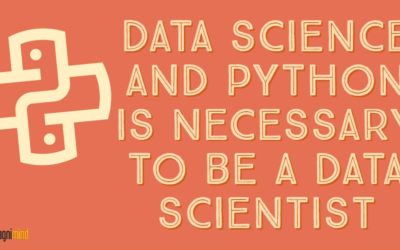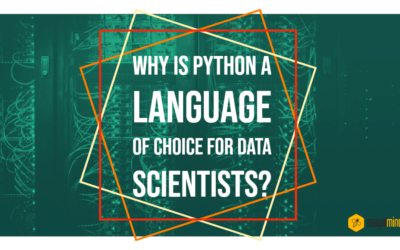Jupyter notebooks can be powerful tools to connect to your remote database. They allow you to streamline, replicate, and document your data. In this tutorial, using a Jupyter notebook, we will briefly see how to connect to a PostgreSQL database, which is a popular open-source relational database, and how to make queries in a Jupyter Notebook using Python language.
Python Blog

Data Science And Python Is Necessary To Be A Data Scientist
Data science has become the buzzword over the last few years. Companies and organizations in virtually every industry are looking to get the optimum value from their rapidly increasing information resources. As we are living today in a data-driven age where interconnected humans and devices are churning out a huge volume of data every second relentlessly, it has become necessary for organizations and companies to take optimum advantage of their internal data assets and scrutinize the integration of hundreds of third-party data sources.
Python Vs R?
In the domain of data science, Python and R are two of the most popular programming languages. Let’s dive in to check how Python and R stack up against each other.
What Is The Best Way To Learn Python?
If you’re looking to learn a programming language that you can use to enter a wide range of verticals, Python is undeniably the best option. This general-purpose programming language is widely used in diverse fields — from data science and machine learning to software and web development, and more. Thanks to its beginner-friendly nature, anyone can get Python training to meet specific goals. Whether it’s testifying your programming skills or getting a raise in salary — the Python certification can help you accomplish these goals easily.
What Are The Jupyter Notebook Shortcuts?
If you want to write code a lot faster and in an easier way, you just can’t ignore the benefits of Jupyter Notebook shortcuts. This can be especially helpful if you’re using Jupyter Notebook for Python.
What Are The Most Used Functions In Python And Their Usage?
Python functions are logically grouped, self-contained blocks that have reusable and organized codes to carry out a solitary task or related set of tasks. By using Python functions, you can boost program readability, evade repetition of codes, alter a program easily, break up a complex process into simpler and smaller steps, and decrease the chances of error.
Why Is Python A Language Of Choice For Data Scientists?
According to various job advertisements for different data science positions, both Python and R belong to the most commonly mentioned and preferred skills. But a lot of studies have revealed that Python programming language is being used more by data scientists. But what exactly makes this language a preferred one for data scientists? In this post, we’ve tried to find out the answer.
Why you need to learn Python?
If you’re a regular reader or follower of programming and technology blog posts and news, you’ve probably noticed the rise of Python as lots of well-acclaimed developer communities like CodeAcademy and StackOverFlow have mentioned this as a major programming language. In the last few years, Python has become one of the most preferred languages for data scientists, developers, and software engineers because of its unmatched features. In this post, we’re going to discuss why obtaining a Python certification would help you take a big leap forward.
Where is Python used in the real world?
Python is perhaps the most versatile programming language that has applications in different domains. Thanks to its features such as high-level in-built data structures, dynamic typing, and binding, Python can be used for rapid application development. This open-source programming language is user-friendly and easily available, which makes it the top choice even in the field of data science ad machine learning.









